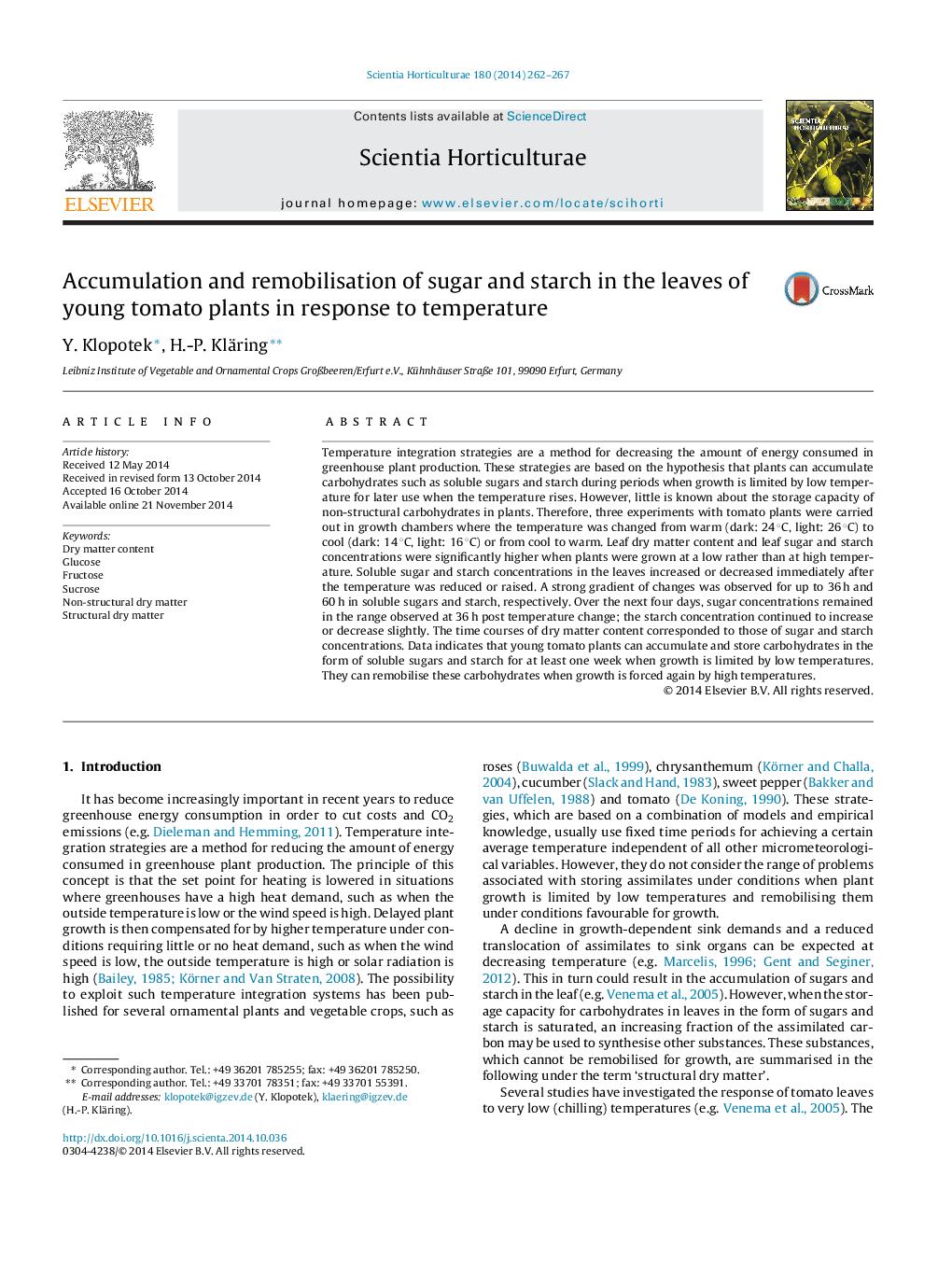| Article ID | Journal | Published Year | Pages | File Type |
|---|---|---|---|---|
| 4566553 | Scientia Horticulturae | 2014 | 6 Pages |
•Tomato plants were grown in growth chambers where the temperature was changed from warm to cool or vice versa.•Leaf soluble sugar and starch concentrations increased or decreased immediately after the temperature was reduced or raised.•Plants can accumulate soluble sugars and starch when growth is limited by low temperatures.•Plants can remobilise these carbohydrates when growth is forced again by high temperatures.
Temperature integration strategies are a method for decreasing the amount of energy consumed in greenhouse plant production. These strategies are based on the hypothesis that plants can accumulate carbohydrates such as soluble sugars and starch during periods when growth is limited by low temperature for later use when the temperature rises. However, little is known about the storage capacity of non-structural carbohydrates in plants. Therefore, three experiments with tomato plants were carried out in growth chambers where the temperature was changed from warm (dark: 24 °C, light: 26 °C) to cool (dark: 14 °C, light: 16 °C) or from cool to warm. Leaf dry matter content and leaf sugar and starch concentrations were significantly higher when plants were grown at a low rather than at high temperature. Soluble sugar and starch concentrations in the leaves increased or decreased immediately after the temperature was reduced or raised. A strong gradient of changes was observed for up to 36 h and 60 h in soluble sugars and starch, respectively. Over the next four days, sugar concentrations remained in the range observed at 36 hpost temperature change; the starch concentration continued to increase or decrease slightly. The time courses of dry matter content corresponded to those of sugar and starch concentrations. Data indicates that young tomato plants can accumulate and store carbohydrates in the form of soluble sugars and starch for at least one week when growth is limited by low temperatures. They can remobilise these carbohydrates when growth is forced again by high temperatures.
